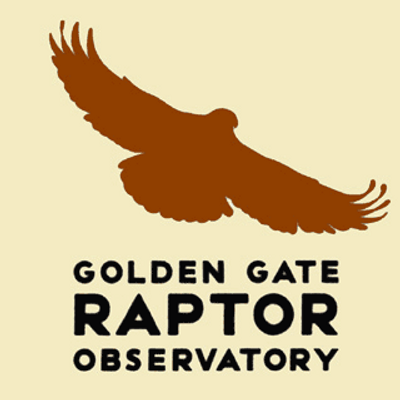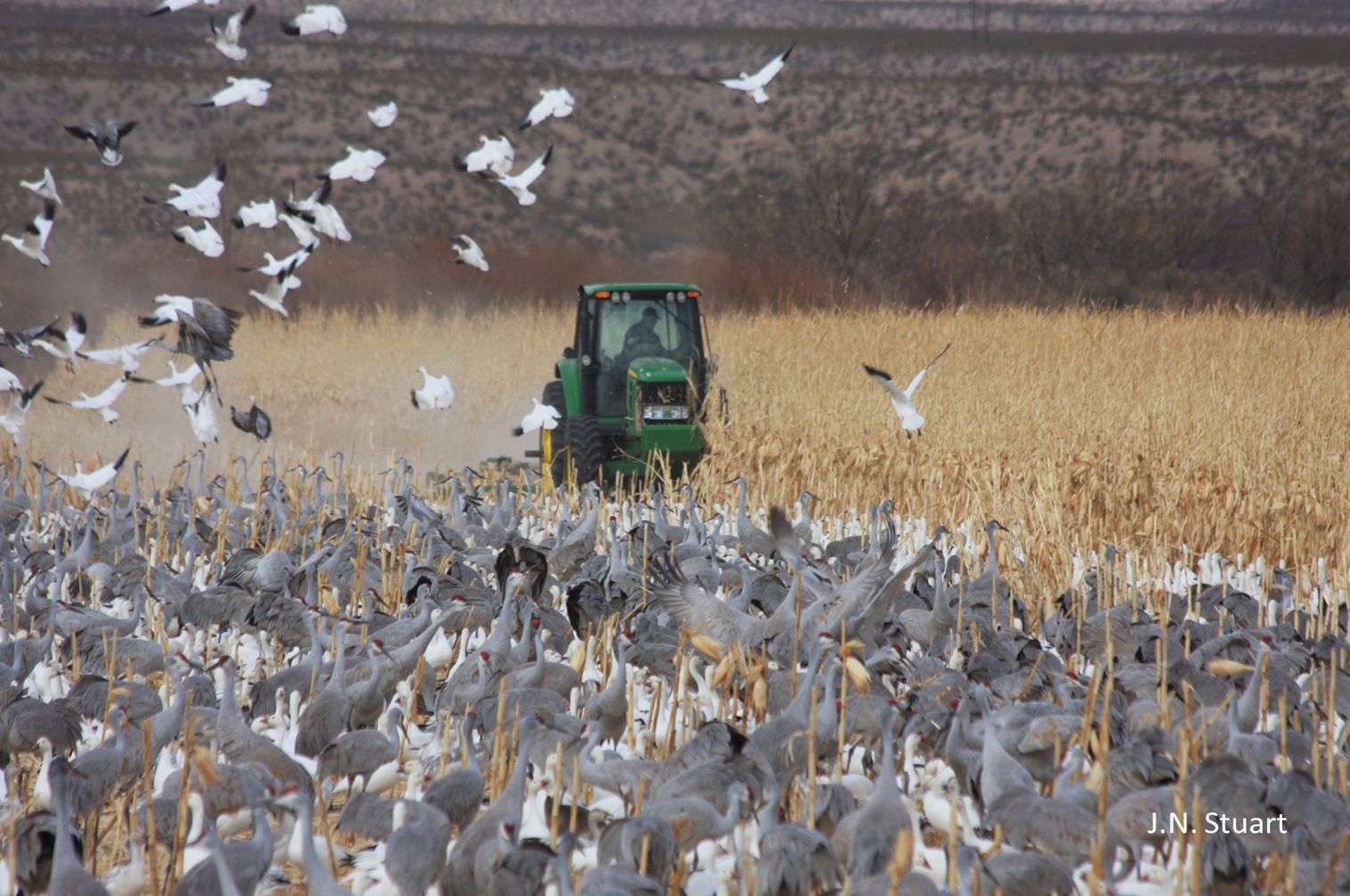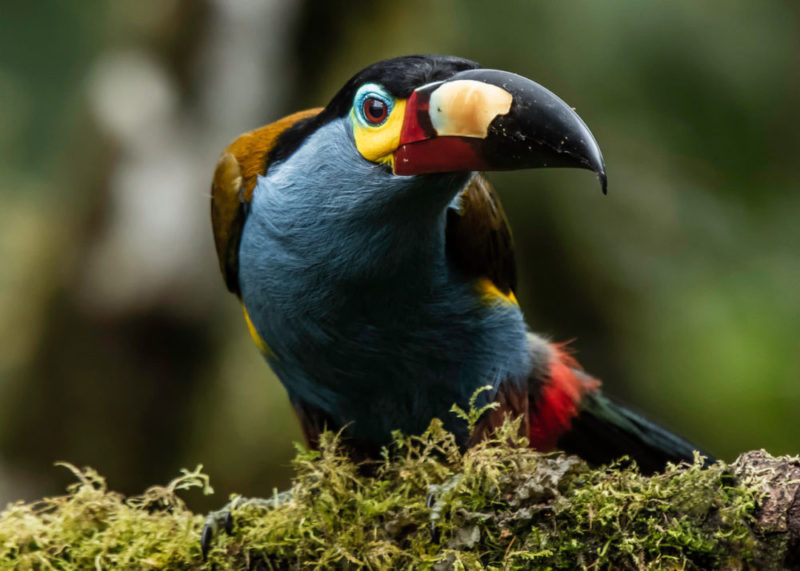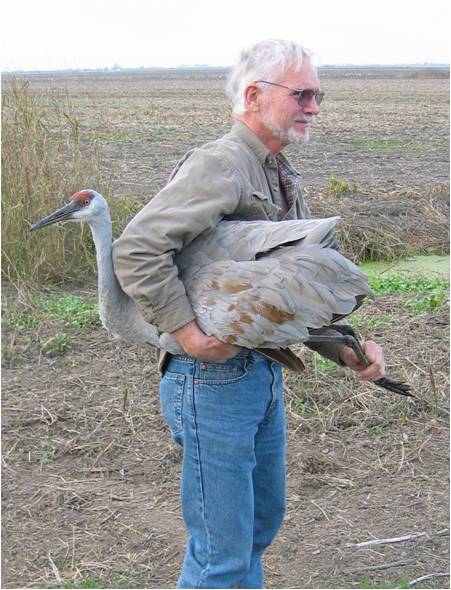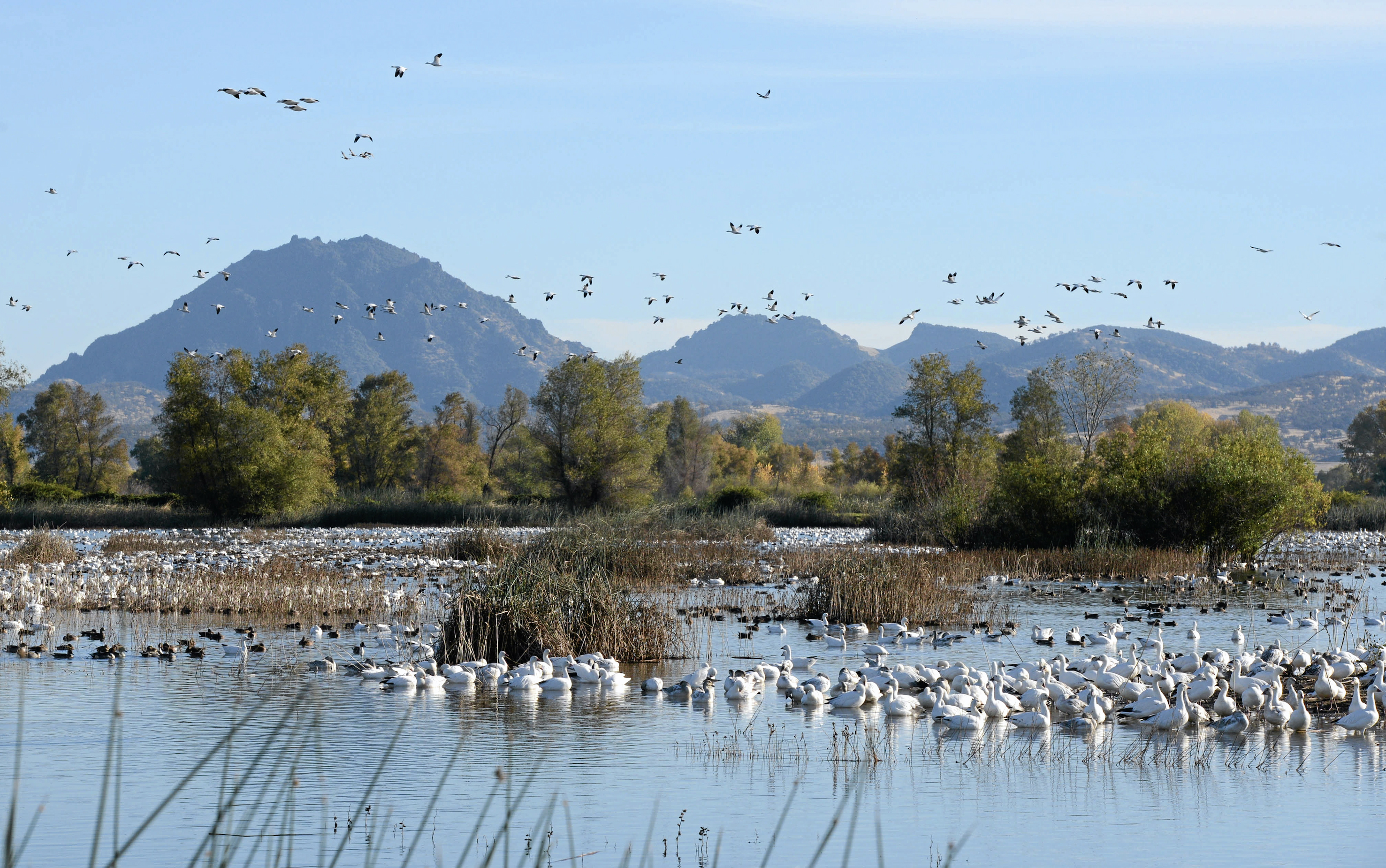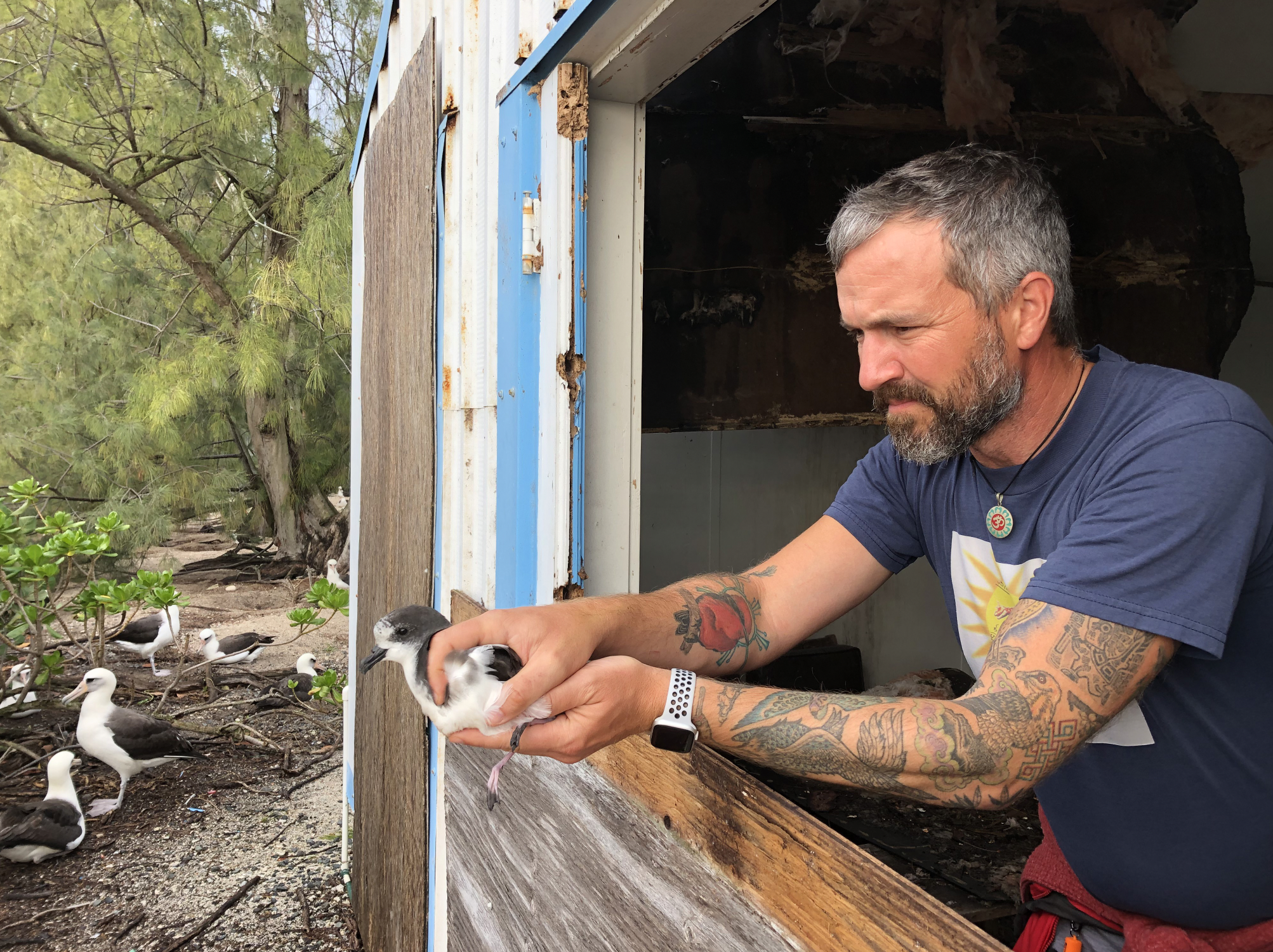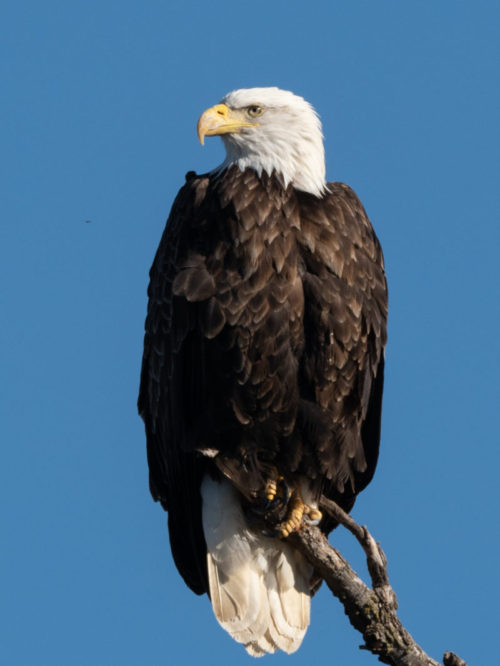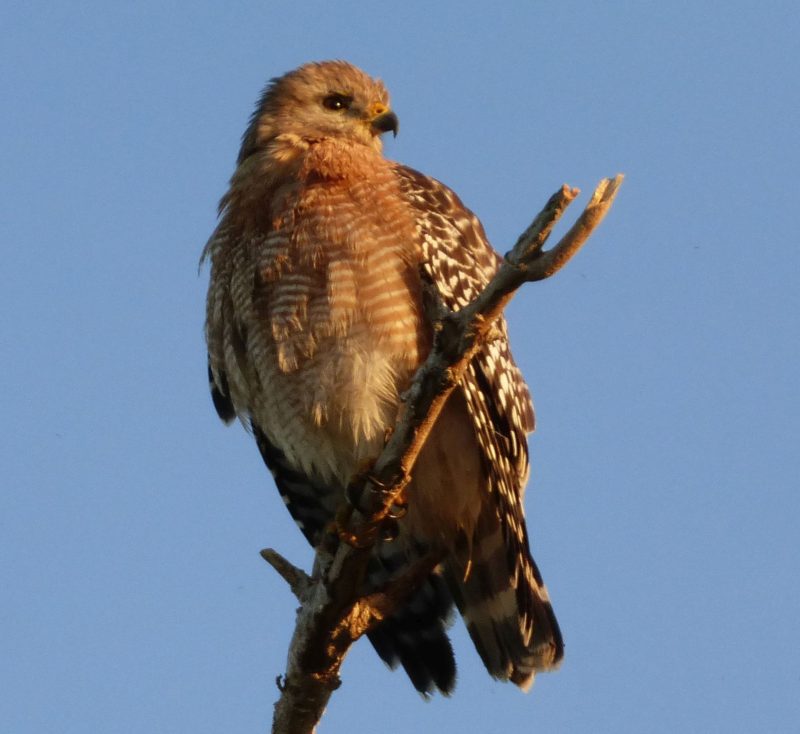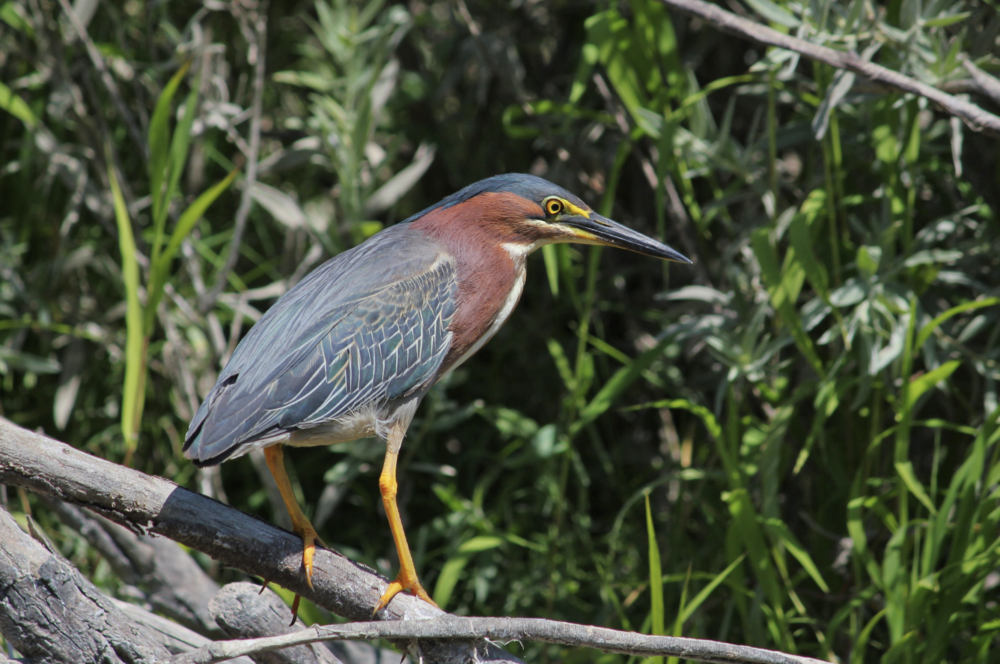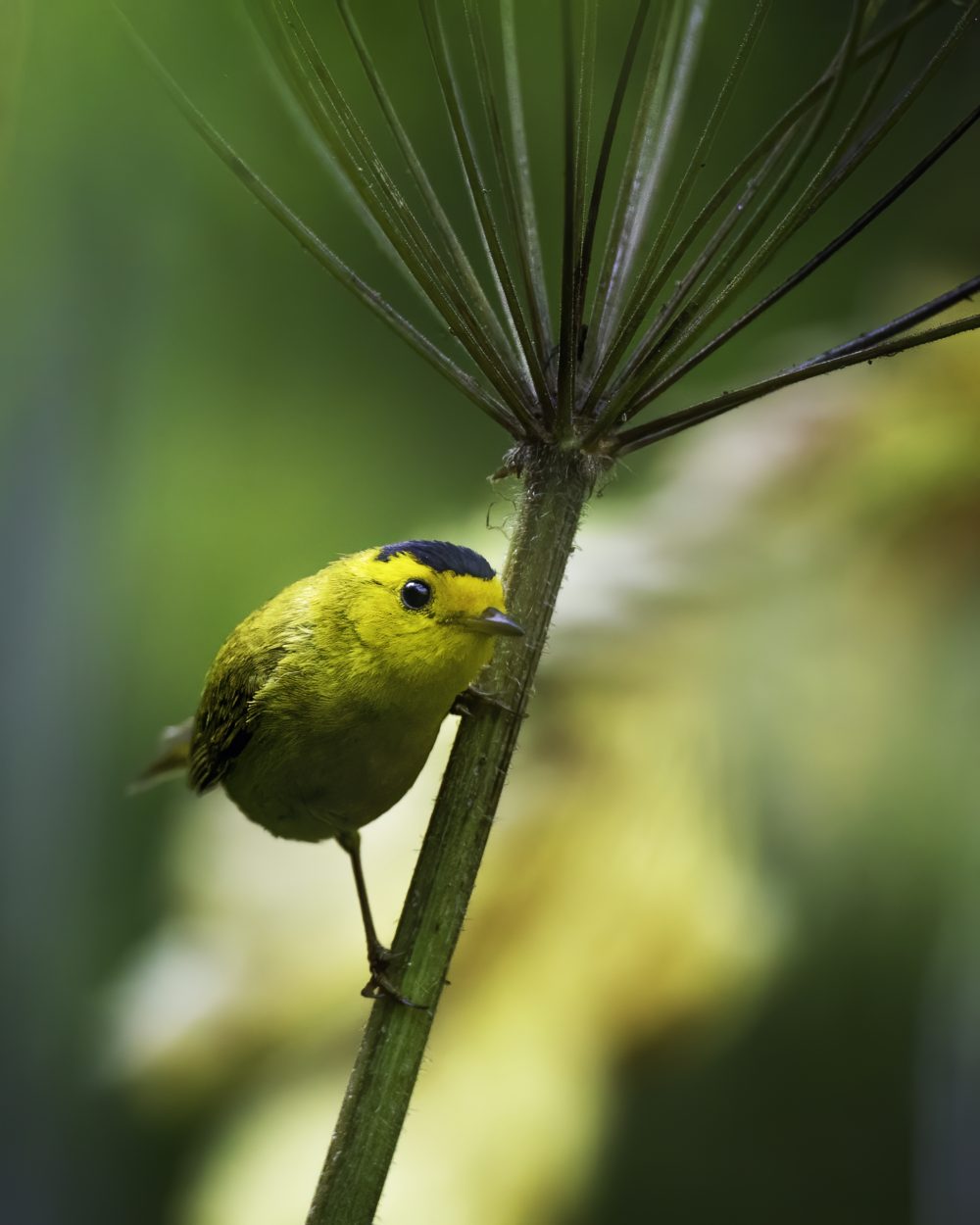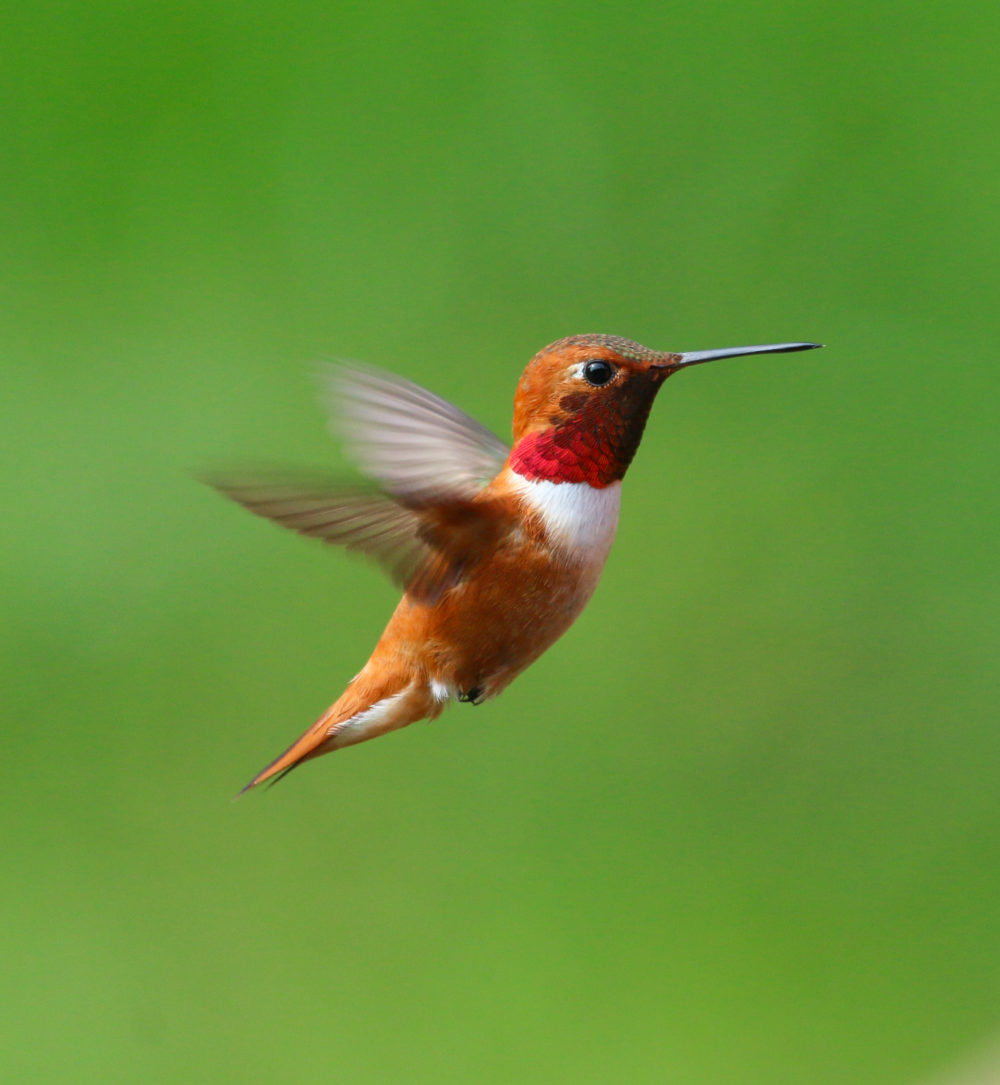Online Birding: Red Tales, Hawkish Behaviors, and Migratory Stories – Revelations from the GGRO’s First 35 Years
Zoom Event CA, United StatesZoom Program - CLICK HERE to signup
Start Date: Wednesday, October 28, 2020
Time: 7 PM to 8:30 PM
With Allen Fish
Each fall, tens of thousands of birds of prey funnel overhead at the Marin Headlands, the largest known raptor migration along the Pacific Coast. In the early 1980’s a few Marin citizens started conducting counting and banding studies on the flight, studies that drew many volunteers and soon evolved into the Golden Gate Raptor Observatory, a full-fledged program of the Golden Gate National Parks Conservancy in cooperation with the National Park Service. Today, the GGRO is part of a broad program of community science and ecological stewardship coordinated by the Parks Conservancy, including ONE TAM, and the Native Plant Nurseries.
Now 35 years old, with four staff and 240 volunteers, the GGRO is the only barometer of migrating raptor populations in California, providing population trends and migration locations for up to 19 species of hawks, kites, falcons, eagles, osprey, vultures, and harriers. Along with keeping an annual pulse on California’s raptors, the GGRO has forged long-term relationships with local biologists – to study a range of stressors on the wild birds of prey we have in hand, among them, diseases, parasites, rat poisons and other toxins.
Come join us for an entertaining discussion of the GGRO, Migratory Story and all things raptor, as GGRO director Allen Fish delves into the best stories from Hawk Hill, as well as the unique meaning of 2020 for long-term bird monitoring. For many Bay Area birders, Allen needs no introduction. The GGRO’s first director, he was hired in 1985. With a background in evolutionary ecology and conservation biology from UC Davis, Allen has a particular interest in bird population responses to urban development, climate change, and other human pressures. His presentations always manage to inform and entertain audiences. This program will no doubt continue that tradition.
Online Birding: Improving Habitat for Central Valley Waterbirds
Zoom Event CA, United StatesImproving Habitat for Central Valley Waterbirds
Wednesday, November 11, 2020
7 PM to 8:30 PM
With Khara Strum
Sign up for the Zoom Webinar HERE
Did you know that over 50 percent of the potential habitat for migratory waterbirds in the Central Valley is also agricultural land? Farm fields might not be the first thing that comes to mind when you think of waterbirds, but here in California farmland is essential to supporting the millions of waterbirds that call the Central Valley home. Join Khara Strum for a tour of some of the ways Audubon California is working with farmers and private landowners to support migratory waterbirds in the Central Valley.
Khara Strum is a Conservation Project Manager for Audubon California. For the last decade, Khara has worked with agricultural industry groups, private landowners, and government agencies to increase the habitat value of farmland for birds and other wildlife in the Central Valley of California.
Feathers and Flight: A Journey to the New World Tropics
Zoom Event CA, United StatesSpeaker: Benjamin Jacobs-Schwartz
Host: Doug Waterman
Date: November 12, 2020
Start time: 7:30 PM
End time: 9:30 PM
Description: International Bird guide, naturalist and photographer, Benny Jacobs-Schwartz will share his dazzling bird photos, captivating videos, and animated story-telling to bring a slice of the tropics to your screen!
Delving into topics of migration, tropical speciation, and bio-diversity, this media rich journey will share some of the fascinating and unique birds that inhabit the new-world tropics. Designed to both educate and entertain, this presentation will certainly leave you with a deeper understanding of tropical ecology, and knowledge about where some of our backyard birds spend their winters!
Benny Isaac Jacobs-Schwartz owns and operates a bird guiding business and lifestyle brand called BIRDS by BIJS (pronounced Bee-jus). Working seasonally as a naturalist guide, expedition trip leader, and international bird guide, Benny works in a variety of locations. Most recently bringing him to such exotic places like coastal Alaska, Trinidad and Tobago, and the Ecuadorian cloud forest.
Seasonally Benny or BIJS, is based in Los Angeles, where he leads public and private birding adventures to urban hotspots. He is also a passionate photographer, specializing in birds. He uses his impressive collection of content to leverage his prolific social media presence. Benny hopes his love of the natural world will inspire others to conserve the open spaces around them and look up more often from their phones!
CLICK HERE to join the Zoom Speaker Series Event. A Q&A will follow the presentation. To ask a question use the Chat feature on Zoom.
Please contact for questions regarding Marin Audubon's Speaker Series events.
Sandhill Crane Populations in California’s Central Valley
Zoom Event CA, United StatesWednesday, December 2, 2020
7:00 PM to 8:30 PM
With Gary Ivey, Ph.D.
CLICK HERE to register for the Zoom Event
While only occasionally seen in Marin, both breeding and wintering Sandhill Cranes can be found in greater abundance in California’s Central Valley and the broader Pacific Flyway. All things Sandhill Crane related will be covered in this program: some history, their status, their life history, migration routes, and breeding areas of the three subspecies that use our state. Dr. Ivey will also discuss where and when you can enjoy them during their winter season.
Dr. Ivey is an undisputed expert who has concentrated his work for over 35 years on waterbirds, waterfowl, and wetland conservation. Sandhill Cranes were the focus of both his Master’s Thesis and Ph.D. He currently serves as a Research Associate with the International Crane Foundation (Saving cranes and the places where cranes dance!) and works to further conservation of cranes, Trumpeter Swans, and other waterbirds in Western North America.
Refuge – a Film from Gray Lodge Wildlife Area
Zoom Event CA, United StatesDecember 9, 2020
7:00 PM to 8:30 PM
With Director Mark Lipman
CLICK HERE to register for the Zoom Event
We invite you to immerse yourself in the sights and sounds of this dawn-to-dusk portrait of the Gray Lodge Wildlife Area in Gridley. When he first visited Gray Lodge in 2011, Director Mark Lipman was not a birder but was deeply touched by the beauty of the place and the symphony of bird sounds. On the night of our program, Mark will briefly introduce his film and be available for the Q&A session afterwards.
Mark created this beautiful film and sound recording over a period of three winters. His program is vastly different from our previous webinars and does not offer a classroom-type-learning presentation. Rather it offers an aesthetic, meditative experience that we hope you will enjoy as you head into the busy holiday season.
This forty-five minute film is intentionally slow paced with no talking, although we may have a birding expert quietly identify the varied birds as they appear on the screen CLICK HERE access a Bird List in advance of the program. Then you can bird your way through the film! We recommend that you view this film on your largest available screen as Mark has created a three-channel video with surround sound, and viewing would be optimum on a large screen.
Mark has worked as a documentary filmmaker for over thirty-five years, exploring a wide range of subjects from domestic violence to human sexuality to affordable housing and community organizing. His films have been broadcast nationally on public television and won numerous awards. Refuge is his first foray into video installations and the natural world.
When Waterbirds are in Crisis
CA, United StatesSpeaker: JD Bergeron
Host: Doug Waterman
Date: December 10, 2020
Start time: 7:30 PM
End Time: 9:30 PM
CLICK HERE to register for the Zoom Speaker Series Event. A Q&A will follow the presentation. To ask a question use the Chat feature on Zoom.
Description:
In 1971 after 800,000 gallons of crude oil spilled into the bay, concerned individuals led by a registered nurse named Alice Berkner jumped into action, bringing International Bird Rescue to life. We have always had to pave a road where there is none. Staff and volunteers work with tenacity alongside clients, partners, and the public to find solutions. Today, we research best practices at our crisis response hospitals in California and Alaska and share them worldwide. Our mission is to inspire people to act toward balance with the natural world by rescuing waterbirds in crisis. We dream of a world in which every person, every day, takes action to protect the natural home of wildlife and ourselves.
We rescue thousands of Bay Area birds every year and provide high quality care for them in our Northern California wildlife center in Fairfield.
JD Bergeron is fascinated by birds. After 20 years of non-profit leadership, JD found a way to bring his passion together with his work experience to become the Executive Director of International Bird Rescue, a nonprofit founded during a major oil spill to help affected wildlife. An unconventional problem solver, JD has redirected Bird Rescue’s impressive track record of working over 230 oil spills to take on the many challenges wild waterbirds face today. JD leads by example, modeling qualities of integrity, mindfulness, and wonder for his dedicated team.
JD thrives on finding innovative ways to inspire others to take action. Moved by his time in the Peace Corps, the nonprofit startup Kiva, and his international travels, he founded Chooda, a volunteer-run incubator with the mission to help inspire change through outdoor adventures that engage individuals with world challenges.
A lifelong lover of nature, JD retreats to the outdoors to gain perspective and to soothe the soul. He counts his month among a million albatrosses on Midway Atoll as the experience of a lifetime. After the magic of Midway, JD returned to Bird Rescue with a renewed passion and commitment to protect the natural home of wildlife and ourselves. He lives with his husband and rescue dog Cosmo in Martinez, CA. His interests include spirituality, drawing, writing, cycling, and volunteering as a Burning Man Ranger.
Changes in Bird Status in the Central Valley
Zoom Event CA, United StatesSpeaker: John Sterling
Host: Doug Waterman
Date: January 14, 2021
Start time: 7:30 PM
End time: 9:30 PM
CLICK HERE to register for the Zoom Speaker Series Event. A Q&A will follow the presentation. To ask a question use the Chat feature on Zoom.
John will discuss the changes in our knowledge of bird distribution and populations in the Central Valley since the publication of Grinnell and Miller’s book on California birds in the 1940s. Loss of habitats, creation of new habitats, reduction of ranges, invasions of new species and other topics will be explored as we reconcile the fact that more species are detected now than prior to the book’s publication.
John is a professional ornithologist and has worked for the Smithsonian Institution, US Forest Service research stations, HT Harvey & Associates, Arizona and Oregon state universities among other organizations since 1981. John has traveled extensively throughout California learning about local bird distribution and is an authority on that state’s avifauna. In 2015 he set the California's new big year record with 501 species and has many big day records as well. John currently has his own company, Sterling Wildlife Biology (www.sterlingbirds.com), specializing in tours, birding classes, research and environmental consulting for The Nature Conservancy, National Audubon’s International Alliance Program, CA Dept. of Water Resources among other organizations.
Marin’s Breeding Birds (How We Know What We Know)
Zoom Event CA, United StatesWednesday, January 20, 2021
7 PM to 8:30 PM
With Dr. Dave DeSante
Sign up for the Zoom Webinar HERE
By way of welcoming the new re-study of the Marin County Breeding Bird Atlas, Dave DeSante offers his reflections on the various sources of evidence we have for the birds who nest here. He’ll talk about the importance of the study of avian populations, the Breeding Bird Survey sponsored by the US Geological Survey, and the MAPS bird banding program organized by the Institute for Bird Populations. An engaging raconteur, Dave will offer a rare-bird’s-eye-view that will interest birders of all levels.
Dr David F. DeSante received his PhD from Stanford University in 1973 with a ground-breaking study of ‘misorientation’ in bird migration. Over the course of a long career, he has been interested in population trends and phenology in North American birds. In 1989, he founded the Institute for Bird Populations, a non-profit devoted to the conservation of North American birds. He is widely published, writing both for popular and scholarly audiences. He resides in Forest Knolls.
New Breeding Bird Atlas
CA, United StatesWednesday, January 27, 2021
7 PM to 8:30 PM
With Atlas Coordinator Juan Garcia
Sign up for the Zoom Webinar HERE
As of this month, the Marin Audubon Society is launching its new breeding bird atlas project. Project leader Juan García will tell us how we got here – and where we’re headed. He’ll review the history of the original project (resulting in the first atlas, published in 1993), describe the goals of the new atlas, and discuss how the volunteers will gather and store data. Listeners will not only learn how the current project is organized but get a preview of key innovations that will be introduced in the new study.
Juan F. García is an independent contractor serving as overall Atlas Coordinator. He grew up on the coastal bend of south Texas, where he began studying birds. A former college professor, he has conducted field surveys for a wide variety of non-profits involved in avian conservation. He has been a Bay Area resident for many years, living presently in Point Reyes Station.
GIS in Conservation
CA, United StatesWednesday, February 3, 2021
4 PM to 5:30 PM - NOTE EARLIER STARTING TIME
With William Wiskes
Sign up for the Zoom Webinar HERE
Like every atlas project, the Marin County Breeding Bird Atlas will feature, at its core, a series of maps that track the distribution of our nesting birds. Join us for a fascinating exploration of high-tech map-making with William Wiskes. William will talk about the pleasures and pains of creating maps for a modern breeding bird atlas. He will focus especially on three classes of maps that he is developing for the Marin County BBA project: conventional paper (printable) maps, an interactive web-map, and a phone-based app that volunteers can use in the field.
William Wiskes, GIS Specialist, is the staff cartographer of the new Marin County Breeding Bird Atlas. He is currently a master’s degree candidate at San Francisco State University. An excellent field ornithologist, William has worked on numerous projects in conservation biology, including, among others, field studies of raptors, Pacific Wren, and Black Rail.
Marin’s Booming Bird Populations: Three-quarters of a Century of Avifaunal Expansion
Zoom Event CA, United StatesSpeaker: Roger Harris
Host: Doug Waterman
Date: February 11, 2021
Start time: 7:30 PM
End time: 9:30 PM
Please sign up HERE
Many of our common Marin County birds, whose abundance we now take for granted, were rare or absent only three-quarters of a century ago. Since the beginning of the Southern Marin Christmas Bird County in the 1970s, for instance, Red-shouldered Hawk detections have increased tenfold. Habitat restoration and maturation, conservation efforts, and cultural changes in the behavior of individual bird species have all contributed to shifting – and, for Marin, generally increasing – bird populations.
Snowy Egrets, Great Egrets, and Great Blue Herons, which had been extirpated from the Bay Area, returned in the mid-twentieth century. Black-necked Stilts were first recorded nesting in our marshes in the mid-1960s, followed by American Avocets in 1984. In 1996, Forster’s Terns nested in Corte Madera Shorebird Marsh for the first time in Marin County.
The dean of California ornithology, Joseph Grinnell, wrote in 1915 that the Ridgway’s Rail “seems destined to early extinction.” The rail is the logo bird of the Marin Audubon Society and conservation advocacy efforts have made Grinnell’s prediction of a century ago at least premature.
Our speaker, Roger Harris, will unpack the evolving dynamics of avifaunal population change using data from Christmas Bird Counts, the Marin County Breeding Bird Atlas, and a variety of other sources. Roger is a Certified Wildlife Biologist and a longtime member of the Marin Audubon Society. Once the pandemic resolves, he hopes to return to leading international eco-tours for the Oceanic Society.
Photo courtesy of Roger Harris
Can Citizen Science Save Us?
Zoom Event CA, United StatesWednesday, February 17, 2021
7 PM to 8:30 PM
With Mary Ellen Hannibal
Sign up for the Webinar HERE
Mary Ellen Hannibal is an award-winning author. Her book Citizen Scientist: Searching for Heroes and Hope in an Age of Extinction was named a best book of 2016 by the San Francisco Chronicle and won a Nautilus book award. She frequently contributes to Bay Nature, Nautilus, the New York Times, and Science magazines. Her Stanford TEDx talk addresses citizen science in general: Can Citizen Science Save Us? Her most recent TED addresses How you can help save the monarch butterfly, and the planet. Citizen science is an old/new practice of direct observation of nature by amateurs. Today the practice is turbo-charged by smartphone technology and vast computing power. It is needed as never before, because plants and animals are disappearing too fast, and Earth is undergoing a mass extinction. The good news is that citizen science is a concept, a format, and a tool for addressing environmental problems at a local level, including the urban environment. In this talk I'll go over some of the basics of citizen science and focus on local projects that make a difference.
Birding-by-Kayak on the Russian River
Zoom Event CA, United StatesSpeakers: Miles and Teresa Tuffli
Host: Doug Waterman
Date: March 11
Start time: 7:30 PM
End time: 9:30 PM
CLICK HERE to join the Zoom Speaker Series
Photo credit: Green Heron by Teresa & Miles Tuffli
Join Teresa and Miles Tuffli as they take you on a virtual birding-by-kayak trip along the lower Russian River in Sonoma County. A leisurely paddle is an ideal way to experience the wildlife the Russian River has to offer on a gorgeous summer day. Herons, swallows, raptors, ducks, and songbirds galore are easily observed while quietly moving along the tranquil river. They'll share some of their favorite photos and audio recordings captured while kayaking and map out their preferred launch spot and route.
Miles and Teresa Tuffli are avid birders from Guerneville who especially love helping “bird-curious” folks take the next step of getting into the field to enjoy the bird world! They lead guided bird walks and give educational presentations for local organizations including the PRNSA Field Institute, Redwood Region Ornithological Society, Laguna Foundation, and Sonoma Land Trust. Residents of West Sonoma County for 11 years, Miles and Teresa also enjoy writing about and documenting our local birds at their website: I’m Birding Right Now ( https://imbirdingrightnow.com).
The Breeding Behavior of our Local Owls – Getting to Know our Nocturnal Neighbors
Zoom Event CA, United StatesWednesday, March 17, 2021
7 PM to 8:30 PM
With Joe Mueller
CLICK HERE to register for the Zoom Webinar
The best time of year to get to know owls is during the breeding season. This is the time when they communicate with each other and allow us a glimpse into their lives. Join Joe for a guided journey into understanding the reproductive behavior of our local owls. We’ll explore topics from territoriality and pair formation to courtship and nesting.
As a Professor of Biology for 30 years Joe has been teaching a rich diversity of courses ranging from ornithology to marine invertebrate zoology as well as leading field courses from Alaskan tundra to Costa Rican Tropical Rain Forests. His teaching style has developed from a view of life focused on systems thinking and how interrelationships make up the essential nature of life. He developed and coordinates the Natural History Program at College of Marin and is the 2008 recipient of the Terwilliger Environmental Education Award.
Rare Bird Sightings in Marin 2020
Zoom Event CA, United StatesWednesday, March 31, 2021
7 PM to 8:30 PM
With California Young Birders Club Members – Joseph Zeno, Mark Schulist, Lucas Corneliussen, and John King
CLICK HERE to Register for the Zoom Webinar
Marin County hosts some of the best opportunities to see and find rare birds. You can see a new bird in Marin every time you go outside. As you grow as a birder and begin to be able to recognize most of the local species, you will start to find new birds that may be rare where you live. The species you observe will change with the seasons. Fall migration in Marin County is exceptional for finding rare birds compared to most places on the west coast because the extent to which Point Reyes National Seashore extends into the Pacific Ocean makes it an ideal resting place for migrating birds. Some of the birds that stop there are regular migrants, and some are truly rare because they get blown off course. These are known as vagrants. This webinar will illustrate where you can find rare migrants and vagrants in Marin county, giving tips on how to find them, and these talented and enthusiastic young birders will show you some of the highlights and best experiences they had with Marin’s rare birds in 2020.
All of the young birders presenting on this date are part of the Bay Area Chapter of the California Young Birders Club. Check out their website and read about their monthly field trips throughout the state.
Young Birders
Joseph Zeno: Sophomore currently attending Terra Linda High School and part of the Marin School of Environmental Leadership (MarinSEL) program. Started birding in 2017 and likes to find and photograph birds and make photo books and calendars. Interested in studying how birds interact with other organisms in our changing environment.
Mark Schulist: Sophomore currently attending Marin Academy High School. Started birding in 2017 and enjoys photographing birds as well as any other wildlife. Interested in patterns of birds and how birds are able to migrate with such consistency.
Lucas Corneliussen: Junior currently attending Credo High School in Sonoma County. Started birding in 2011 and enjoys California county birding and birding in new locations all over the state as well as birding throughout the Point Reyes National Seashore on an almost weekly basis. Currently interested in nocturnal flight counts (NFC) and changes in migration patterns within certain species over the course of different periods of time.
John King: Sophomore currently attending Terra Linda High School. Started birding in 2017, and still enjoying the different habitats California has to offer. He enjoys birding in coastal forested areas where small passerines are abundant and in large flocks. Interested in the evolution of birds and the adaptations (structural/behavioral) they made to survive in the wild.
Discovering Wood-warblers in Marin County: When Nesters Arrive and Where to Find Them
CA, United StatesSpeaker: Daniel Edelstein
Host: Doug Waterman
Date: April 15th, 2021
Start time: 7:30 PM
End Time: 9:30 PM
Register for Zoom Webinar HERE
- Which wood-warbler species typically nest annually in in Marin County and the North Bay region?
- Which are year-round residents and when do returning spring migrant species arrive?
- And why do vagrant wood-warblers in fall visit the Outer Point at Point Reyes National Seashore?
These questions and others will be addressed in this virtual, Zoom slide show highlighting one of our area’s most captivating bird families.
In creating this program, Avian Biologist and Birding Guide Daniel Edelstein utilizes his 30+ years of watching wood-warblers throughout the USA to discuss both common and rare Marin County/North Bay wood-warbler species.
A professional Birding Guide (WarblerWatch.com) since the mid-1980s, Daniel Edelstein works full-time as a freelance, Consulting Avian Biologist, Environmental Scientist, and is a Certified Wildlife Biologist Associate. He has presented birding programs and led tours in more than 20 USA states. In addition, he teaches college-level birding classes as an Adjunct Faculty member in the Biology Department at Merritt College (Oakland, CA) (Merritt.edu). His popular blog — WarblerWatch.blogspot.com — featuring wood-warbler articles and photo quizzes is now 15 years old.
Photo credit: Wilson's Warbler by Elyse Omernick
A Worldwide Collaboration to Track Bird Migration
Zoom Event CA, United StatesSpeaker: Amie MacDonald
Host: Doug Waterman
Date: May 13, 2021
Start time: 7:30 PM
End time: 9:30 PM
Register for the Zoom Meeting HERE
The Motus Wildlife Tracking System, is an international collaborative research network that uses automated radio telemetry to track birds, bats, and insects. This presentation will include an overview of the Motus system, which consists of a large number of receiving-towers strategically placed all over the world. When a tagged bird (or butterfly) passes within range of a tower, its presence is recorded and incorporated into a database accessible to interested investigators wherever they may be. (And, yes, the system has also been used to track butterfly migration.)
The network is rapidly expanding as more and more ornithologists and researchers seek to determine what can be done to conserve and enhance survival for these beautiful animals.
Amie MacDonald works as the Western Motus Coordinator for Birds Canada, and is currently working to expand the Motus Wildlife Tracking System in British Columbia. Previously, she studied Red Knots during migratory stopover on the James Bay coast, and has also spent several years working as a field technician, primarily with shorebirds in James Bay and the Bay of Fundy, but also with seabirds, passerines, and small mammals on various projects. She loves being in the field and is interested in migration, population ecology, and the conservation of highly mobile species.
Photo: Tagged bird prepared for Motus Tracking System
For the Love of Hummingbirds
Zoom Event CA, United StatesSpeaker: John Shewey
Date: June 10, 2021
Start time: 7:30 PM
End time: 9:00 PM
Register for Zoom meeting HERE
Hummingbirds amaze and intrigue us. Their high-speed enigmatic lifestyles are a blur; their startling colors and exotic behaviors are delights. Hummingbirds also inspire us—they are like tiny ambassadors with the power to usher people into a deeper interest in and appreciation for the natural world. Author John Shewey taps into the intrigue in this program based on his new book, The Hummingbird Handbook. Join John for this fun-filled program and learn more about hummingbirds, how to attract them, how to cater to them, and how to be a great hummingbird host in your yard.
Lifelong birding enthusiast John Shewey is a veteran writer, editor, and professional outdoor photographer, with credits in Birdwatching, along with dozens of other magazines and he is co-author of Birds of the Pacific Northwest, a Timber Land Press Field Guide. John has photographed birds from the mountains of Alaska to the jungles of Central America to the islands of the Caribbean, and his website chronicles many of these travels in rich photographic detail. Visit him at birdingoregon.com.
BIRDING IN MARIN – Point Reyes Fish Docks, Lighthouse and Beaches
CA, United StatesPoint Reyes - Fish Docks, Lighthouse & Beaches
September 4th
8:30AM - Mid Afternoon
Birding with Jim White and Bob Battagin
September provides the most birding surprises in Marin as many juvenile birds make their first migration west and south without the aid of google maps. Western migrants such as Townsends, Hermit and Black-throated Gray Warblers may be in the Point Reyes Tree islands with rarer eastern species. Western Tanagers may share a tree with a Rose-breasted Grosbeak.
Drake’s Bay begins to harbor large numbers of wintering species like scoters, loons, terns and gulls. A Wandering Tattler may join Black Turnstones, sanderlings and Godwits along the shores. This is a good time and place to witness Parasitic Jaegers harassing Elegant Terns to try to snitch a captured fish.
The Point Reyes Lighthouse sits well out into the Pacific Ocean so some pelagic birds like Shearwaters may be seen from the comfort of the shore. Peregrine Falcons are often seen, especially on mornings when the fog hides the coast, and migrating land birds may be hunted out over the ocean. The point with its few Monterey Cypress can then be a life saving vision to them.
Limit of 15 participants. All participants must be vaccinated. CLICK HERE to register for this field trip. There will be NO waiting lists at this time.
DIRECTIONS: Meet at 8:30 at the Fish Docks parking lot on the outer point. Take Sir Francis Drake thru Inverness toward the Light House. Left turn to the FISH DOCKS just after Ranch A (The Nunes Ranch) and one mile before the Lighthouse. Carpool if possible, be vaccinated and allow 1.5 hour from the San Rafael area.
VAUX’S SWIFTS AT MCNEAR BRICK AND BLOCK
CA, United StatesMcNear Brick & Block, San Rafael, CA
6 PM to 7:40 PM (depending on the weather)
Birding with Rich Cimino
Join other MAS members for an evening opportunity to witness Vaux’s Swifts during their fall migration through Marin, which occurs in September and October. Dan McNear of McNear Brick & Block has kindly allowed Marin Audubon to access this remarkable site where decommissioned smoke stacks provide an important communal roosting place for the swifts.
Watching thousands of swifts as they descend into the stacks just before night- fall is an unforgettable sight. At the peak of migration, as many as 19,000 swifts have been counted in one evening. However, keep in mind that the number of swifts varies greatly from night to night and can range from a few hundred to thousands. Like everything else in birding, there are no guarantees!
Sunset on the evening of our visit will be at 7:12 PM, so plan on arriving early to be ready. If the weather on the day of our trip is particularly cool or windy, the swifts are likely to enter the stacks early, so plan accordingly. Bring scopes, binoculars, and, if desired, folding chairs for your seating comfort. It can be chilly at dusk. Please stay with our group and do not enter any of the private areas on the property. Use soft voices and be sure to respect the privacy of local residents.
Limit of 15 participants. All participants must be vaccinated. CLICK HERE to register for this field trip. There will be NO waiting lists at this time.
DIRECTIONS: From Hwy 101 take the Central San Rafael exit. Head east on Third St./Point San Pedro Rd for about 3.5 miles. The brickyard will be on the right. The address is 1 McNear Brickyard Rd. Park as close to the San Pedro Road entrance as possible. Please do not drive to or park near the closed gate.
